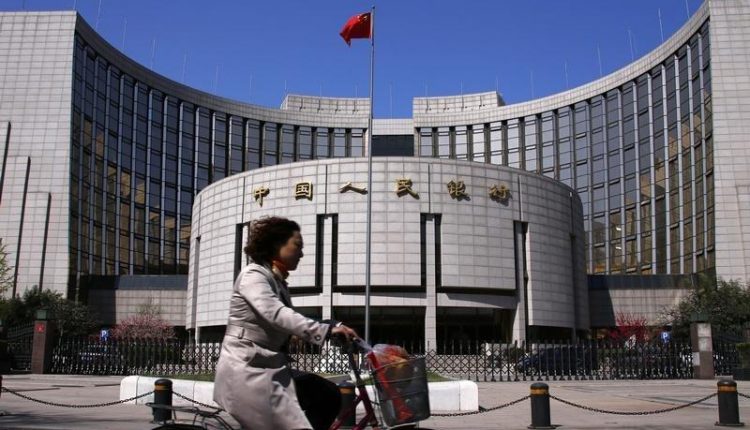China c.bank cuts some banks’ reserve requirements to spur growth
China’s central bank announced on Sunday it will cut the amount of cash that most banks must hold as reserves to lower financing costs and spur growth, amid concerns over a potential economic drag from an escalating trade dispute with the United States.
The reserve requirement cut, the fourth by the People’s Bank of China (PBOC) this year, comes after Beijing has pledged to expedite plans to invest billions of dollars in infrastructure projects as the economy shows signs of cooling further, with investment growth slowing to a record low.
Reserve requirement ratios (RRRs) – currently 15.5 percent for large institutions and 13.5 percent for smaller banks – would be cut by 100 basis points effective Oct. 15, the PBOC said.
The central bank will inject a net 750 billion yuan ($109.2 billion) in cash into the banking system with the cut by releasing a total of 1.2 trillion yuan in liquidity, with 450 billion yuan of that to offset maturing medium-term lending facility (MLF) loans.
The RRR cut, announced on the last day of China’s week-long National Day holiday, shows the central bank is probably worried about the impact of “external shocks” to markets such as a speech last week by U.S. Vice President Mike Pence, said Zhang Yi, chief economist at Zhonghai Shengrong Capital Management.
Pence intensified Washington’s pressure campaign against Beijing on Thursday by accusing China of “malign” efforts to undermine U.S. President Donald Trump ahead of next month’s congressional elections and reckless military actions in the South China Sea.
Pence’s speech marked a sharpened U.S. approach toward China, going beyond the bitter trade war between the world’s two biggest economies, which has magnified concerns about the outlook for China’s economy.
Weakening exports were already a drag on growth in the first half of the year after giving an added boost to the economy last year, highlighting the need for sustained strength in domestic demand if significant new U.S. tariffs are imposed.
The “very timely” RRR cut is big enough to help boost confidence in the economy, said Xu Hongcai, deputy chief economist at the China Center for International Economic Exchanges, a Beijing think tank.
“The trade war’s impact on the economy is showing. There is room for further reductions and I expect another 1 percentage point cut by the year-end,” Xu added.
The central bank said on Sunday it would continue to take necessary measures to stabilize market expectations, while maintaining a prudent and neutral monetary policy.
The PBOC would “maintain reasonably ample liquidity to drive the reasonable growth of monetary credit and social financing scale,” it said.
The RRR cut would not create depreciation pressure on the yuan, the PBOC said, adding that the central bank would keep the foreign exchange markets stable.
Softening focus on cutting debt
With China’s economy cooling and the full impact of U.S. trade tariffs still to be felt, policymakers are shifting their priorities to reducing risks to growth, with the yuan and stock markets under pressure.
China’s economic growth rate slowed slightly to 6.7 percent in the second quarter year-on-year, still well above the government’s full-year target of around 6.5 percent. But some key activity indicators have weakened more sharply.
Fixed-asset investment is growing at the slowest pace on record, while non-performing loans surged in the second quarter and defaults climbed. The July nationwide jobless rate rose to 5.1 percent.
Smaller companies, in particular, are having a tough time securing loans and are grappling with rising borrowing and operating costs, fueled in part by a lengthy official clampdown on riskier lending like shadow banking.
The weighted average lending rate for non-financial firms, a key indicator reflecting corporate funding costs, inched up 1 basis point in the second quarter to 5.97 percent, following a rise of 22 basis points in the first quarter and a rise of 47 basis points in 2017.
Source: Reuters



